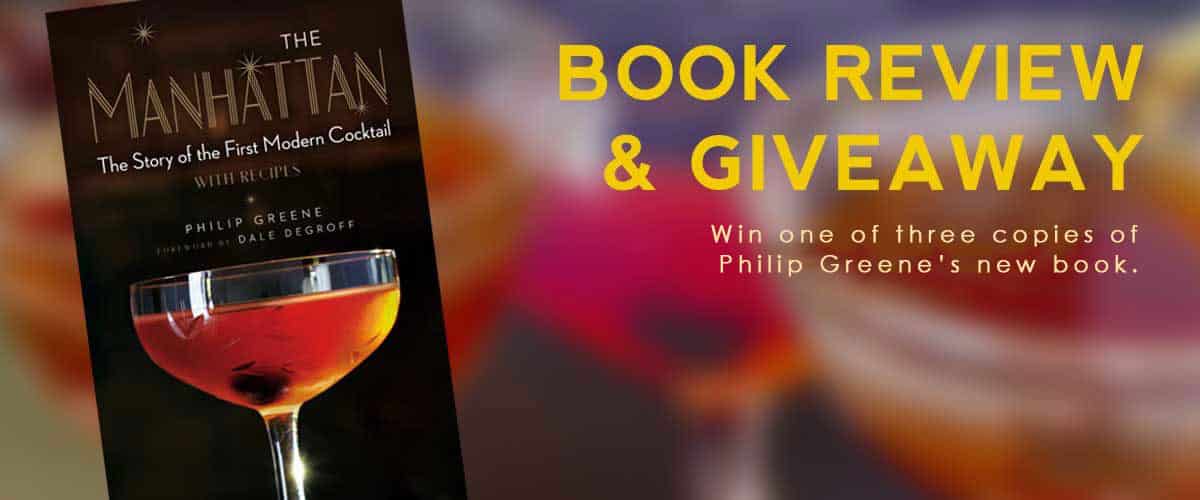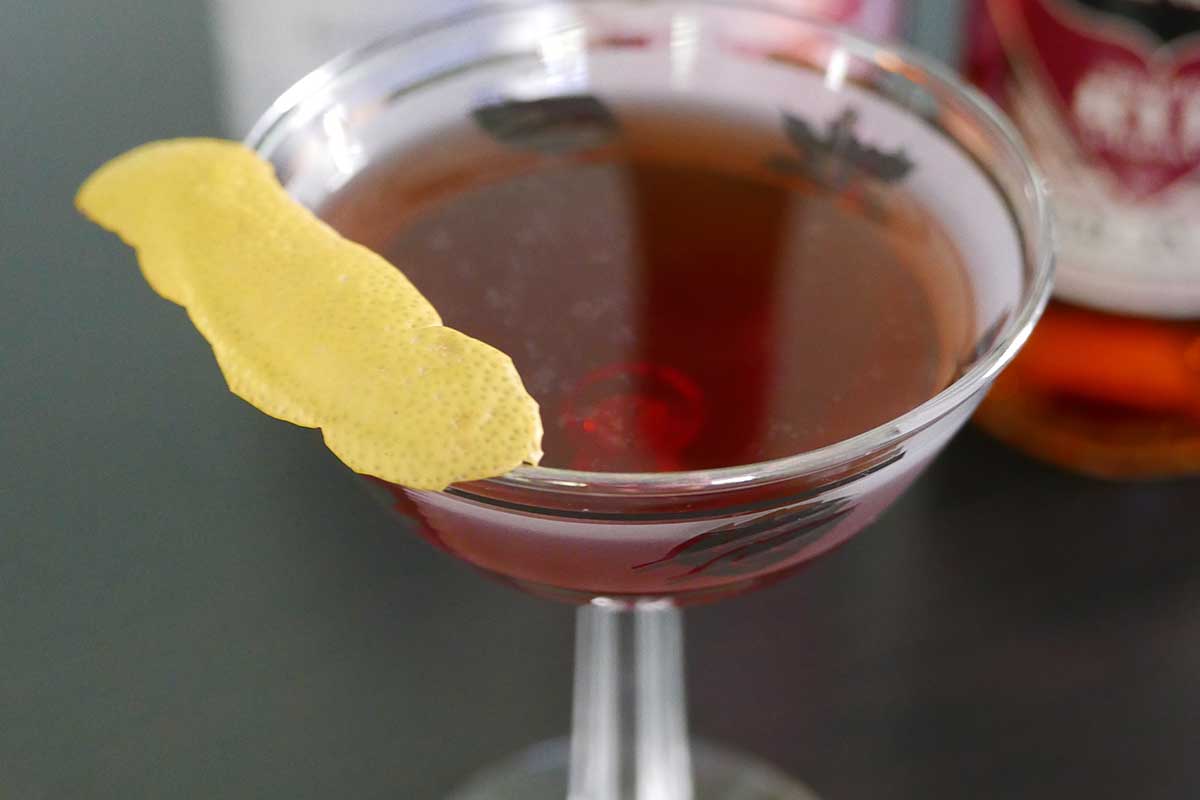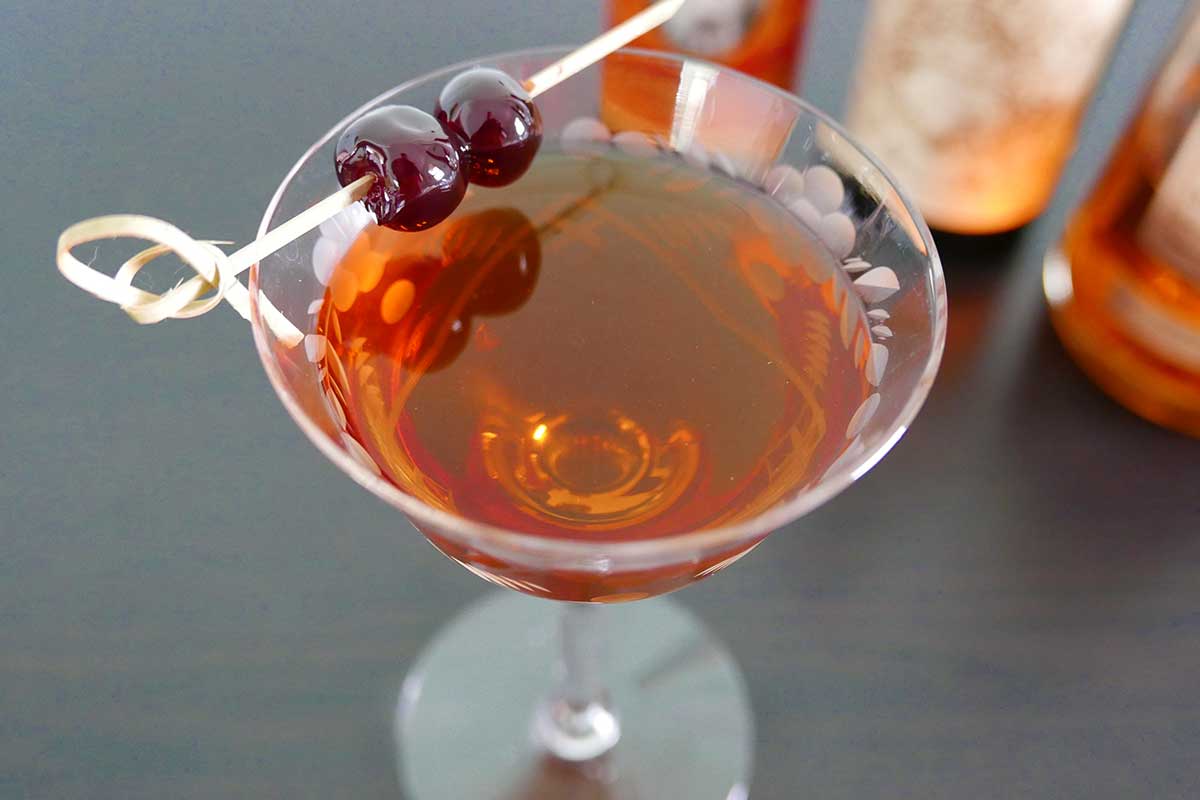The Manhattan: The Story of the First Modern Cocktail Book Review
The Manhattan: The Story of the First Modern Cocktail by Philip Greene offers a richly detailed history of the ingredients and the evolution of the cocktail itself.

The Manhattan: The Story of the First Modern Cocktail by Philip Greene offers a richly detailed history of the ingredients and the evolution of the cocktail itself. Greene takes the reader through the myriad origin stories (spoiler alert: most of them aren’t true!) and beyond to the descendants of the Manhattan such as the Brooklyn. One of my favorite stories in the book details how the Manhattan exposed a politician’s hypocrisy and destroyed his career.
The second half of The Manhattan is recipes for Manhattans and all of its progeny. Variations with other spirits, other fortified wines, other bitters. Campari is a kind of bitter, so the Negroni family is here. And hey, the Martini is related, right? If it contains spirit + vermouth + bitters, the recipe is probably here along with many of my lesser known favorites: The Saratoga, Deshler, Fourth Regiment, and Cocktail a la Louisiane to name a few.
Tucked in the back of the book is perhaps my favorite part: an appendix containing every major Manhattan recipe published between 1884-1937. While I had certainly seen early Manhattan recipes that called for a dash of gomme syrup (and/or curaçao or absinthe), I did not realize the drink evolved directly from the Old Fashioned. It was a split base Old Fashioned powered by equal parts whiskey and vermouth, and then the usual sugar and bitters. Over time we’ve done away with the sugar and liqueurs as drinker’s palates, vermouth recipes, and whiskey proof have changed. The classic “2 parts whiskey, 1 part vermouth, and a dash or two of bitters” recipe did not even appear until 1914, thirty years after the earliest known recipes.
The Manhattan is one of my two favorite whiskey cocktails. (The other is the Old Fashioned and I’m honestly not sure which I make at home more often.) While I started out drinking bourbon Manhattans, sometime in the last 5 years my palate shifted and I often find them cloying and sticky. Maybe terrible maraschino cherries were to blame. The spicier and somewhat lighter flavor of the rye Manhattan became more enjoyable to me and I would continue to drink them into the warmer weather months.

Rye Manhattan
- 2 oz rye whiskey (I prefer Rittenhouse)
- 1 oz Dolin Rouge Vermouth de Chambéry
- 2 dashes Angostura bitters
- Garnish: lemon peel
Stir whiskey, vermouth, and bitters over ice and strain into a chilled coupe. Twist lemon peel over the surface of the drink and rub along the rim of the glass.
After reading this book I decided I needed to find the right 2:1 bourbon Manhattan. The answer was not so much in the bourbon (just make it a good one around 100 proof) as the vermouth and bitters. Rye can get away with a lighter style red vermouth; I like Dolin or Cinzano to smooth off the rough edges. Lacking rye’s spice, bourbon needs something to bolster its softer qualities. Carpano Antica Formula is bourbon’s friend with strong vanilla notes of its own. Those big vanilla and wood flavors can get a bit heavy, so I prefer to use orange bitters in a bourbon Manhattan as a brightener. Garnishes are important too. Rye and lemon peel complement each other well. Lemon in a bourbon Manhattan just tastes off to me. Better to use a cherry or orange peel.

Bourbon Manhattan
- 2 oz Four Roses Single Barrel
- 1 oz Carpano Antica Formula
- 2 dashes orange bitters (I prefer equal parts Fee Bros. & Regan’s No. 6)
- Garnish: maraschino cherry
Stir whiskey, vermouth, and bitters over ice and strain into a chilled coupe. Garnish with cherry.
One final note on making Manhattans: Never shake a Manhattan. Shaking introduces air bubbles and makes the drink foamy and scummy looking. Stirring keeps the texture velvety smooth.
Whether you’re a cocktail nerd like me and are looking for a deep dive into the history of one of the world’s greatest cocktails or if you just want to add a few new recipes to your repertoire, I highly recommend Greene’s book.
